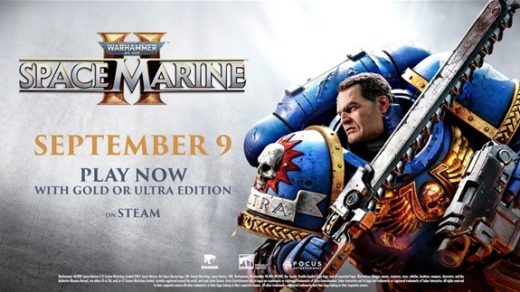It’s hard to imagine that a new entry in the classic side-scrolling arcade game Metal Slug would turn out to be a tactical strategy game. The once trigger-happy soldiers, who fearlessly charged through hailstorms of bullets, must now patiently outwit enemies in turn-based battles. The clash between a beloved old IP and a new gameplay style raises the question: is it a poor fit, or does it spark unexpected fun?
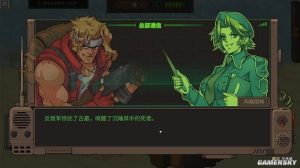
Unlike most derivative games based on popular IPs, Metal Slug Tactics boasts a hardcore strategic core that sets it apart from many tactical games. At first, the mechanics may seem baffling, leading to repeated failures. However, once players grasp the unique systems of combos, adrenaline, and extra action points, they’ll discover a similar sense of exhilaration to the original Metal Slug when chaining kills on the grid-based battlefield.
A Rogue-like Tactical Game That Breaks the Mold
The level structure of Metal Slug Tactics takes inspiration from the rogue-like tactical game Into the Breach from a few years ago. Players start by choosing one of three maps to conquer, and after completing it, they can either tackle the remaining maps or challenge the final boss directly. Depending on the choices made, a single playthrough can range from 2 to 4 major levels.
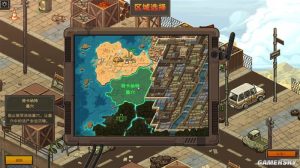
Each major level contains several optional sublevels, where players can preview mission requirements and rewards to strategize resource allocation before the boss fight. However, the terrain and structure of these sublevels are fixed; only the enemies and objectives are procedurally generated. Since the content doesn’t evolve as players progress, repeated playthroughs of the same maps eventually feel monotonous, and the novelty begins to wear off.
Fortunately, the gameplay itself introduces some fresh ideas.
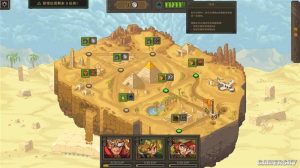
When I first played the game, adopting a cautious, conventional approach of slowly advancing and fortifying positions led to frequent defeats. In the game, cover is scarce, and many obstacles provide neither damage reduction nor protection. All attacks have a 100% hit rate, with no calculations for accuracy. Additionally, each character starts with just 10 HP, making them vulnerable to being overwhelmed if left exposed on open terrain.
Initially, this design felt counterintuitive. However, after repeated attempts, I realized the game encourages frequent movement and proactive attacks. In the original Metal Slug, players had to keep moving and shooting to deal with swarms of enemies. This concept is subtly carried over to Metal Slug Tactics through its unique “adrenaline” and “shield” mechanics.

During a single turn, the farther a character moves, the more skill resources and temporary armor they gain. Skill resources allow for higher action efficiency, and some active abilities even let characters continue acting after being used. With the added temporary armor, characters become more resilient during the current turn.
As a result, the most effective strategy in Metal Slug Tactics involves having all characters move as far as possible and creating overlapping fields of fire. However, managing safety after long-distance moves remains a challenge for players to solve.
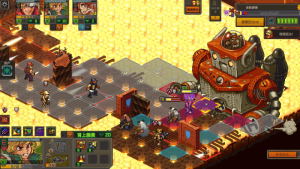
The “combo attack” mechanic also significantly raises the skill ceiling. When one character attacks an enemy within another character’s range, a free follow-up attack is triggered. While it may seem like each character only gets three actions per turn, with proper planning, up to nine attacks can be executed in a single turn. Combined with additional actions granted by skills or passives, it’s possible to take down five or six enemies in one round—provided the enemy positioning is favorable.
These mechanics faithfully preserve the essence of Metal Slug and deliver a distinctive strategic experience.
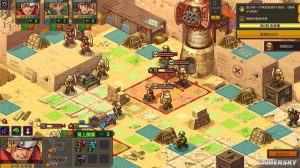
Another rogue-like aspect of the design is the expendable nature of all characters during levels. Regardless of how much damage they take or even if they die, as long as the mission objective is completed, all characters are fully revived at the end of the level. In scenarios requiring specific characters to survive or reach objectives within a certain number of turns, sacrificing a few units to achieve the goal can be a wise tactical choice.
Nostalgic Elements Faithfully Preserved
One notable feature is how faithfully elements from the original series are recreated. For instance, in the pyramid map, characters attacked by mummified enemies temporarily transform into mummies themselves, gaining powerful new abilities. Additionally, boss fights feature familiar foes from the original series. Seeing these enemies use recognizable attacks on the grid can evoke a wave of nostalgia for long-time fans.

Complex Systems and a Steep Learning Curve
Metal Slug Tactics offers nine playable characters, each with four equipment presets (including primary and secondary weapons and passive abilities). Players can also unlock new traits and attachments for weapon types like pistols and grenades. While there’s plenty of depth in character customization and builds, the scattered content and highly variable tactical scenarios make it difficult to establish consistent strategies.
Progression outside of battles offers no stat increases, meaning players must carefully gather resources, currency, and experience during levels to slowly build up strength.

Characters also feature distinct traits and strategic advantages. For example, the starting character, Eri, has exceptional mobility. She can move again after every kill and ignores height differences in terrain. Her abilities make tackling levels with complex terrain or high-ground objectives significantly easier.
However, compared to traditional tactics games, Metal Slug Tactics feels more hardcore due to its dense and intricate systems. The game relies on text-only tutorials with no practical demonstrations, leading to a high learning curve.
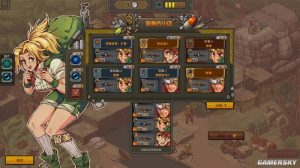
For instance, each character has two weapons, various active and passive abilities, and mechanics like adrenaline, temporary shields, and action points. Combined with enemy formations and special abilities, players face numerous variables to consider. The limited clarity of in-game information further complicates decision-making, often requiring repeated calculations and trial and error—making the game feel exhausting.
Accessibility Issues and Bugs
The game also lacks key quality-of-life features. For example, players can’t preview attack ranges after moving, action triggers are sometimes unclear, and there’s no warning for enemy-targeting abilities. These issues create unnecessary challenges during gameplay.
Moreover, the version tested for this review had several bugs, such as characters occasionally displaying incorrect positions after entering or exiting vehicles and attackable zones for certain large enemies or structures failing to appear.
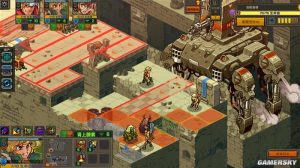
Conclusion
As a rogue-like tactical game, Metal Slug Tactics delivers a solid overall performance. It faithfully adheres to many characteristics of the original series while building an innovative framework. However, a lack of guidance, some inconvenient UI designs, and numerous bugs prevent the experience from reaching excellence.


